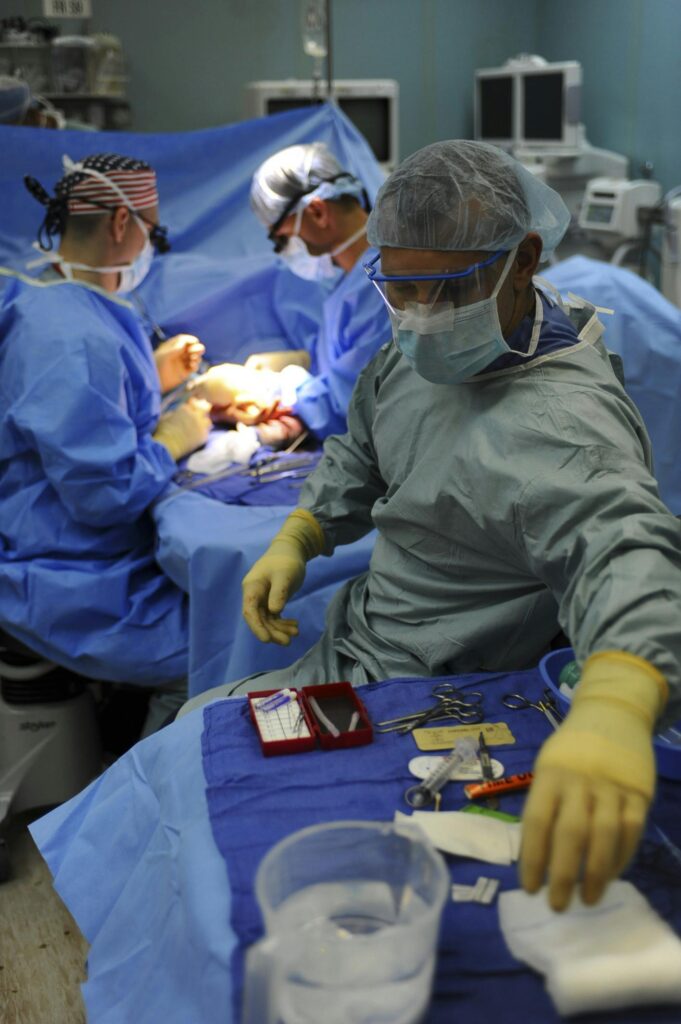“Discover the essential information about angioplasty, a common procedure for treating narrowed or blocked arteries. Learn about the process, benefits, risks, and recovery tips to understand how angioplasty can improve cardiovascular health and well-being.”
Table of Contents
1. Introduction to Angioplasty
Angioplasty is a pivotal intervention used to treat coronary artery disease (CAD) by opening up blocked or narrowed arteries. This minimally invasive procedure has transformed cardiac care, offering patients a less invasive alternative to traditional surgery. By improving blood flow to the heart, angioplasty can alleviate symptoms such as chest pain and prevent severe complications like heart attacks. This comprehensive guide explores the procedure’s indications, risks, benefits, and future advancements.
2. Understanding Angioplasty: A Medical Overview
Angioplasty, also known as percutaneous coronary intervention (PCI), involves the insertion of a catheter into a blood vessel, typically in the groin or wrist. A balloon at the tip of the catheter is inflated to widen the blocked or narrowed artery. Often, a stent is placed to keep the artery open and maintain proper blood flow. This procedure is instrumental in managing coronary artery disease and improving cardiovascular health.
3. Indications for Angioplasty
Angioplasty is indicated for several cardiovascular conditions, including:
- Stable Angina: Chronic chest pain or discomfort triggered by physical activity or stress, relieved by rest or medication.
- Unstable Angina: Severe, unpredictable chest pain that occurs at rest or with minimal exertion, often signaling an impending heart attack.
- Myocardial Infarction (Heart Attack): A critical blockage in the coronary arteries that necessitates immediate intervention to restore blood flow and minimize heart damage.
- Coronary Artery Disease (CAD): Persistent narrowing of the coronary arteries due to plaque buildup, leading to reduced blood flow to the heart muscle.

4. The Angioplasty Procedure
The angioplasty procedure involves the following steps:
- Preparation: The patient is given a local anesthetic and may receive sedation. The insertion site is cleaned and prepped.
- Catheter Insertion: A catheter is inserted into a blood vessel, usually in the groin or wrist. Using fluoroscopy, the catheter is guided to the coronary arteries.
- Balloon Inflation: A balloon at the catheter’s tip is inflated to compress the plaque against the artery walls, widening the artery.
- Stent Placement: A stent is often placed in the artery to keep it open and ensure long-term patency.
- Completion: The catheter and balloon are removed, and pressure is applied to the insertion site to prevent bleeding. The patient is then monitored during recovery.
5. Types of Angioplasty
Various types of angioplasty include:
- Balloon Angioplasty: Basic technique where a balloon is used to widen the artery.
- Stent Placement: Combines balloon angioplasty with inserting a stent to keep the artery open.
- Drug-Eluting Stent Angioplasty: Utilizes stents coated with medication to reduce the risk of re-narrowing.
- Percutaneous Transluminal Angioplasty (PTA): Applied to non-coronary arteries, such as those in the legs or kidneys.
6. Pre-Procedure Preparations
Before undergoing angioplasty, patients should prepare by:
- Undergoing Medical Evaluation: Includes history, physical exam, and diagnostic tests such as blood tests and angiography.
- Reviewing Medications: Adjusting or stopping certain medications, particularly anticoagulants or antiplatelet drugs.
- Fasting: Following instructions to fast before the procedure.
- Providing Informed Consent: Understanding the procedure, risks, and benefits, and signing consent forms.

7. Post-Procedure Care
Post-procedure care involves:
- Monitoring: Observing the patient in a recovery room to detect any immediate complications.
- Medication Management: Prescribing medications to prevent blood clots and manage pain.
- Activity Restrictions: Advising against strenuous activities and heavy lifting.
- Follow-Up Appointments: Scheduling visits to monitor recovery and evaluate the procedure’s success.
8. Risks and Complications
Potential risks and complications of angioplasty include:
- Bleeding or Hematoma: At the catheter insertion site.
- Infection: At the insertion site or internally.
- Allergic Reactions: To the contrast dye used during the procedure.
- Artery Damage: Including dissection or rupture.
- Restenosis: Re-narrowing of the artery after treatment.
- Heart Attack or Stroke: Rare but possible during or after the procedure.

9. Benefits and Outcomes
Angioplasty provides several benefits:
- Symptom Relief: Reduces chest pain and improves exercise tolerance.
- Reduced Risk of Heart Attack: By restoring blood flow to the heart.
- Improved Quality of Life: Enhances daily activities and reduces hospitalizations.
- Minimally Invasive: Compared to open-heart surgery, involves shorter recovery times and less discomfort.
10. Comparisons with Other Treatments
Angioplasty is often compared to:
- Medications: While drugs manage symptoms and risk factors, they may not resolve severe arterial blockages.
- Coronary Artery Bypass Grafting (CABG): A surgical procedure that creates a new route for blood flow around blocked arteries, used for extensive coronary disease.
11. Future Directions in Angioplasty
Future advancements in angioplasty include:
- Enhanced Stent Technologies: Development of bioresorbable stents and advanced drug-eluting stents.
- Advanced Imaging Techniques: Improved imaging for better visualization and guidance during procedures.
- Personalized Medicine: Tailoring treatments based on genetic and molecular profiles for better outcomes.
12. Frequently Asked Questions
What is the difference between angioplasty and stenting?
Angioplasty refers to the procedure of widening a narrowed artery using a balloon. Stenting is often performed in conjunction with angioplasty, where a small mesh tube (stent) is placed in the artery to keep it open.
How long does the angioplasty procedure take?
The procedure typically takes between 30 minutes to 1 hour, depending on the complexity and number of arteries treated.
What should I expect during recovery?
After angioplasty, you may experience mild discomfort or bruising at the insertion site. Most patients are able to return to their normal activities within a week, though strenuous activities should be avoided for a few weeks.
Are there any lifestyle changes required after angioplasty?
Yes, adopting a heart-healthy lifestyle is crucial. This includes eating a balanced diet, engaging in regular exercise, quitting smoking, and managing stress. Your healthcare provider will give you specific recommendations.
How effective is angioplasty?
Angioplasty is highly effective in relieving symptoms of coronary artery disease and reducing the risk of heart attack. However, some patients may experience restenosis, where the artery narrows again.
What are the long-term outcomes of angioplasty?
Long-term outcomes are generally favorable, with many patients experiencing significant improvement in symptoms and quality of life. Regular follow-up and adherence to prescribed medications and lifestyle changes are essential for maintaining these outcomes.
13. Conclusion
Angioplasty remains a vital procedure in the management of coronary artery disease, offering patients relief from symptoms and reducing the risk of serious cardiovascular events. With ongoing advancements and refinements in technique, angioplasty continues to evolve, promising improved outcomes and enhanced patient care. Understanding the procedure, its benefits, risks, and future prospects can empower patients to make informed decisions about their cardiovascular health and treatment options.
